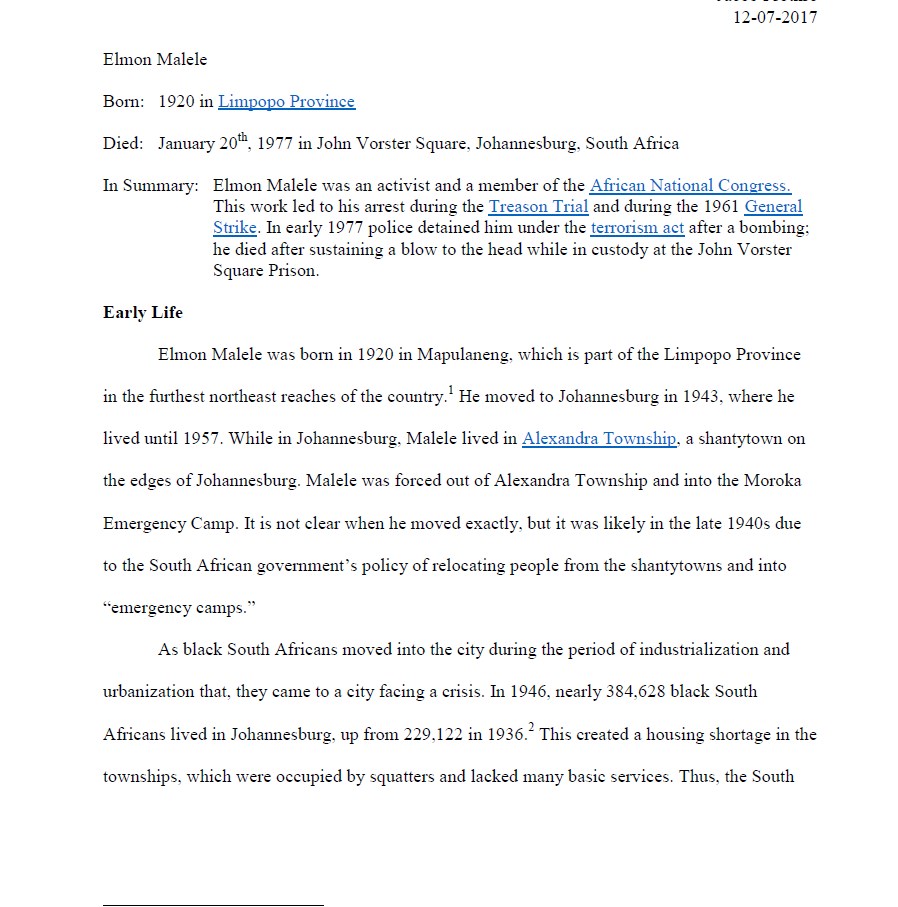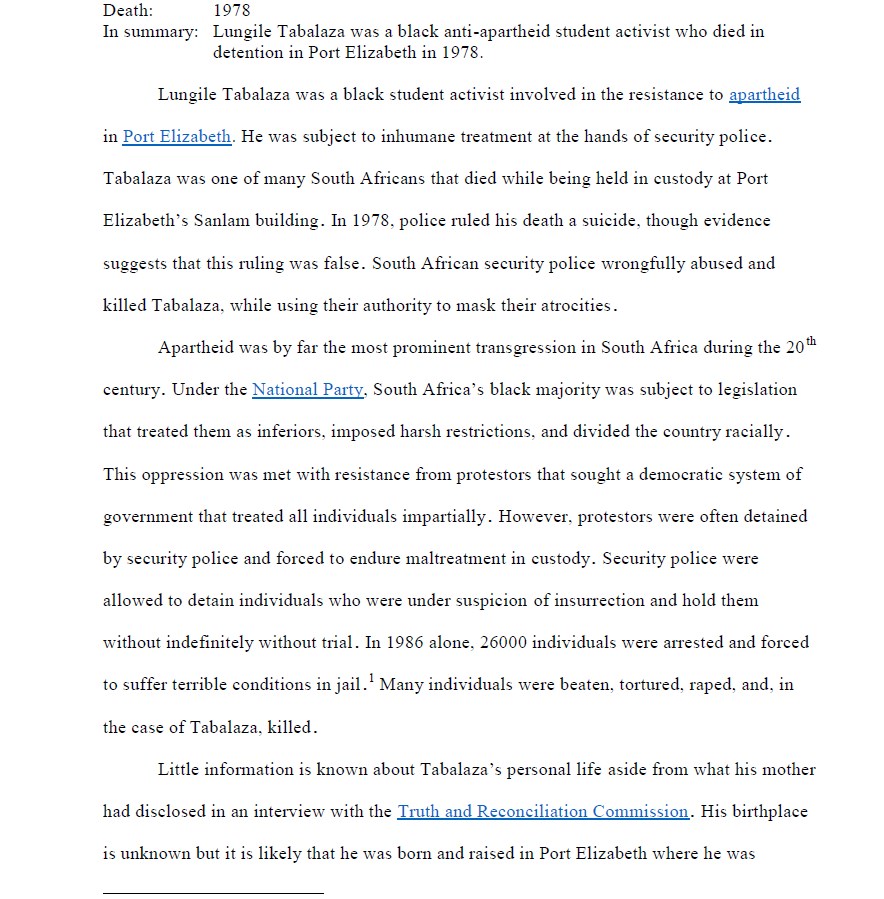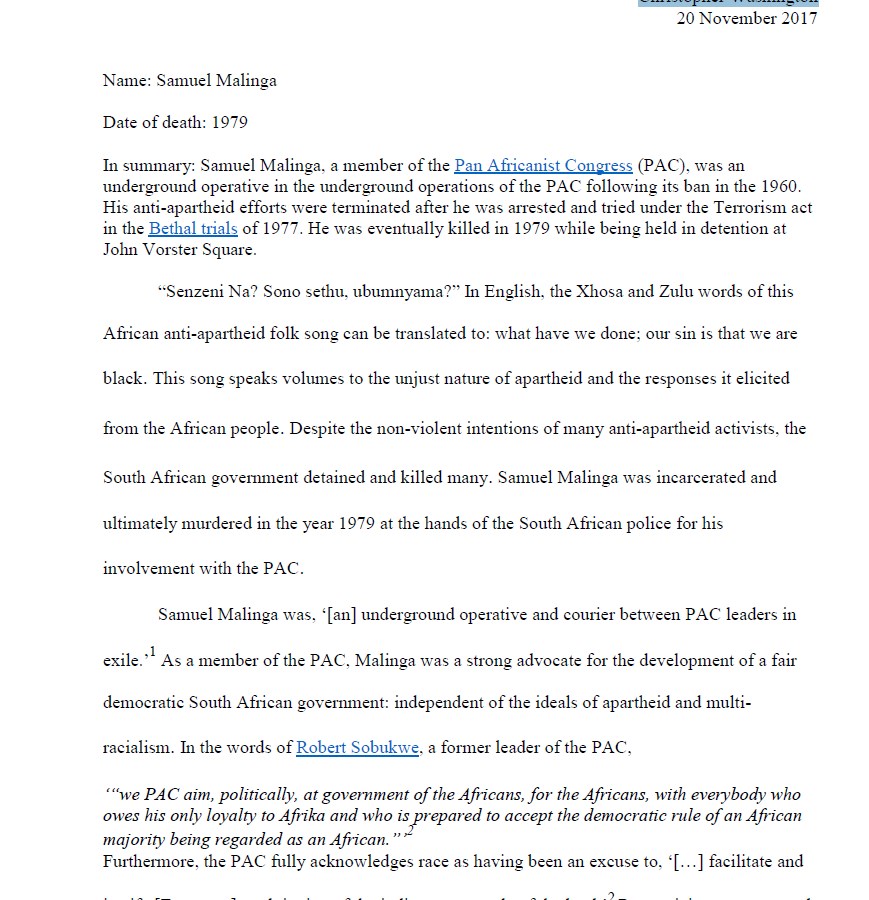Biography of Lungile Tabalaza by Aasish Nandagopal
Biography of Alfred Makaleng by Lucas Martin
Phuthaditjhaba, Free State
Phuthaditjhaba is a Sotho town in the province of the Free State. Flanked by the drama of the Drakensberg Mountains and the Maluti Mountains, Phuthaditjhaba is nestled within a part of the Drakensberg, giving the vistas around it a special kind of wonder that resonate with visitors and make for excellent photographs. On its south-eastern border lies the province of KwaZulu-Natal; while Lesotho is on the south-west of the town.
It was established in 1974 as the capital of QwaQwa, and was originally known as Witsieshoek to European settlers and Qwaqwa to locals. Its current name is a seSotho word that means 'meeting place of nations or tribes'. Long before this, though, the area was inhabited by the San, who were hunter-gatherers, living off the rich abundance of the land and infusing it with their culture and customs.
The area is one of undeniable beauty. Snow on the peaks of the Drakensberg Mountains around the town is always impressive, and transforms the landscapes. In fact, it was this snow that led to the San folk calling it Qwa-Qwa, which means ‘whiter than white’.
Because of the mountainous nature of the area, service delivery in Phuthaditjhaba is sometimes compromised. But, this is scarcely an issue when compared to the gorgeous natural surrounds and the deep, touching cultural variety. The people here are known for their friendliness and warm smiles.
Phuthaditjhaba is about 255 kilometres from Bloemfontein, and around 350 kilometres from Durban. Durban is home to the King Shaka International Airport, which is the landing base of millions of tourists from around the world.
Biography of Samuel Malinga by Christopher Washington
The Death of Tshifhiwa Muofhe by Margaret Philpott
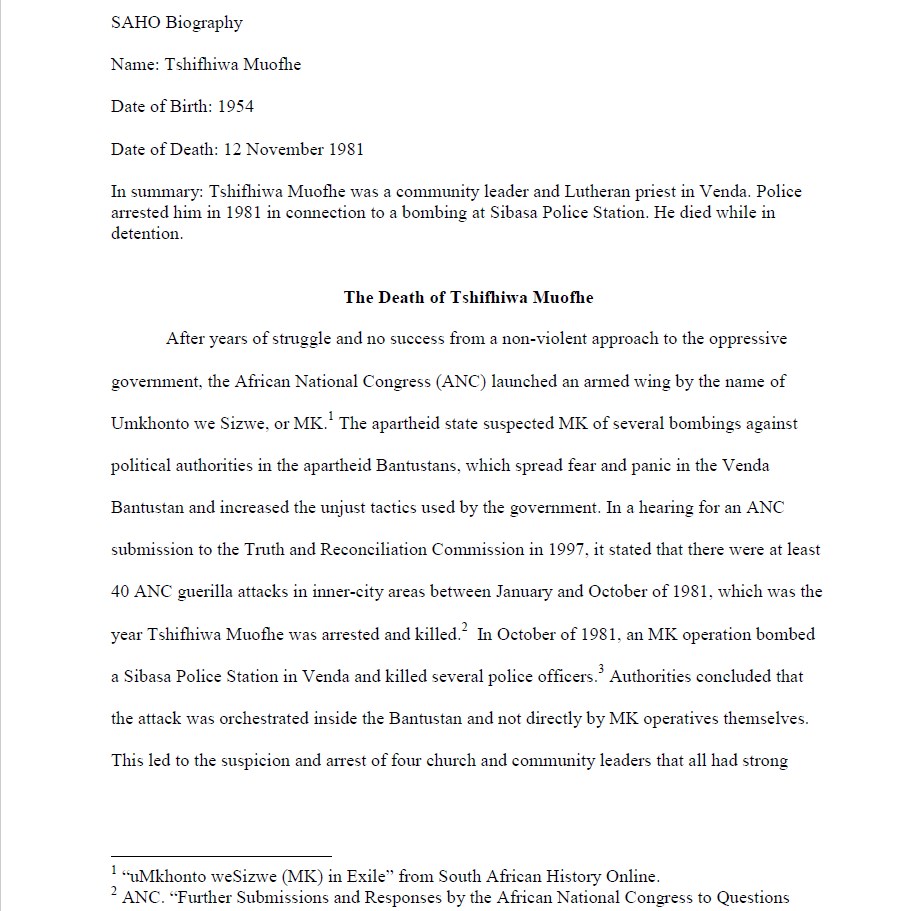
This article was written by Margaret Philpott and forms part of the SAHO and Southern Methodist University partnership project
Saint Helena Bay
St Helena Bay – stretching from Dwarskersbos in the North past Shelley Point Peninsula, to Cape St Martin in the West. It actually comprises a total of 18 small Bays with intriguing names such as: 'Hannasbaai and Vioolbaai'. It also incorporates the neighboring Towns of Stompneusbaai and Britannia Bay. Preferred by yachtsmen and canoeists, each Bay has its own attractions, stunning sea views and sparkling surf. The Bay is an all-year-round destination for outdoor and nature lovers and offers an ideal base for exploring the outlying Areas.
The main Harbour is at Sandy Point, with a second Port at Laaiplek. Fed by the nutrient-rich cold Benguela Current along the Coast, the waters here boast abundant fish – including snoek – and crayfish (rock lobster), providing a livelihood to many locals, with fish often sold straight off the boats.
The Area is home to a number of fish-processing factories and much of South Africa’s fish processing is done here. Several navigators tried seeking a sea route from Europe to Asia, in the 15th Century but the Portuguese explorer; Vasco da Gama landed in St Helena Bay in 1497, originally naming it 'Bahia de Santa Elena'.
Imposing granite boulders provide a stunning backdrop to the Town and unspoilt white Beaches hug the long shoreline. It is a favourite destination for walkers, who will often spot various species of Dolphins. Southern Right Whales also visit in Winter and Spring, to calve. Humpback and Killer Whales are frequently seen here to. Saint Helena Bay, is at the Southern most point of the whale's migratory route, from Northern Europe. Saint Helena Bay is also on the Cape Birding migration Route. Keen birders should keep an eye out for roosting Cormorants and the African Black Oystercatcher nesting along the rocky shoreline. Yachtsmen, canoeists, and surfers love the waters here! "This makes the Area a birder’s paradise!" As elsewhere on the West Coast, the veld comes alive with vibrant wildflowers in spring after good Winter rains. Saint Helena Bay is the only Area along the West Coast where the sun rises across the Bay because of it faces, North East. Or you can head to the attractive Beacon, (sometimes erroneously called a Lighthouse) at Stompneus Point which marks the Western entrance to Saint Helena Bay. Fed by the nutrient-rich Benguela Current, Saint Helena Bay is one of the World’s prime fishing Areas. Its waters provide a valuable livelihood to many locals as well as an abundance of food for the Dolphins and Southern Right Whales, which enjoy the calm waters.
https://www.westcoastway.co.za/st-helena-bay/
https://www.sa-venues.com/attractionswc/laaiplek.php
https://www.westcoastway.co.za/west-coast-way-foodie-route/
https://www.airbnb.co.uk/rooms/50603267?source_impression_id=p3_1651824213_Abd3X5HdkwOZnRnF https://www.capestmartin.co.za/
https://www.sa-venues.com/attractionswc/stompneusbaai.php
https://www.airbnb.co.uk/rooms/50603267?source_impression_id=p3_1652169617_CyNxWySDsb4s5Zmp
Biography of Phakamile Mabija by Grace Garrott
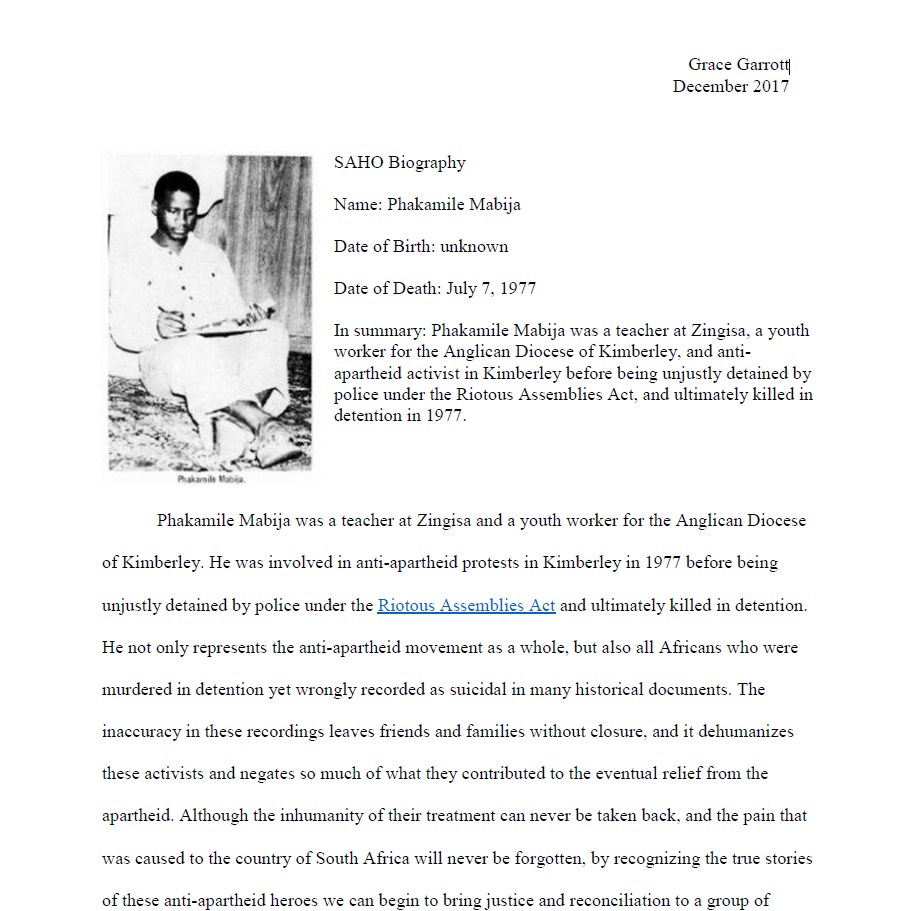
This article was written by Grace Garrott and forms part of the SAHO and Southern Methodist University partnership project


